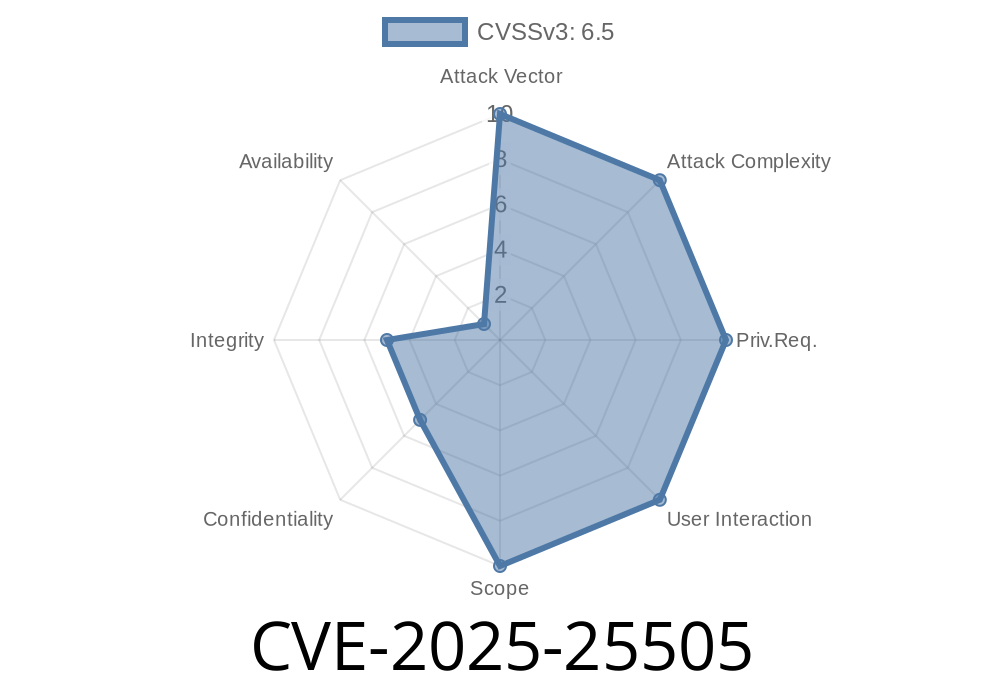In this long read post, we will delve into a Buffer Overflow vulnerability found in the Tenda AC6 wireless router's firmware version 15.03.05.16_multi. This vulnerability, identified as CVE-2025-25505, specifically affects the sub_452A4 function, which can lead to potential security threats and unauthorized access to the router.
We will go through the details of the vulnerability, share code snippets to demonstrate the issue, and provide links to original references for further exploration. Lastly, we will discuss the known exploits related to this vulnerability and steps to mitigate the risk.
Details of Vulnerability
The Tenda AC6 wireless router runs on firmware version 15.03.05.16_multi. The sub_452A4 function is a part of this firmware and is susceptible to a Buffer Overflow condition that occurs when an attacker sends an HTTP request with a large amount of data, causing the application to crash. This crash can subsequently enable the attacker to execute arbitrary code or gain unauthorized access to the router.
The vulnerability was initially discovered and reported by a security researcher (link to original report) and has been assigned CVE-2025-25505 as its identifier in the Common Vulnerabilities and Exposures (CVE) database.
Code Snippet
To better understand the issue, let's examine the following code snippet extracted from the sub_452A4 function:
int sub_452A4(int sock, int data_size)
{
char buffer[512]; // The vulnerable buffer
// Receive data from the client
int received_data = recv(sock, buffer, data_size, );
// Check if the received data is correctly formed
if (received_data <= )
{
perror("Failed to receive data");
return -1;
}
// Process the data (the vulnerable part)
int ret = processData(sock, buffer, received_data);
// More code here...
}
In this code snippet, we see that the 'buffer' variable is declared with a fixed size of 512 bytes. The function then receives data from the client (using the 'recv' function) of size 'data_size' and stores it in the 'buffer'. If an attacker sends data larger than 512 bytes, it will cause a Buffer Overflow, leading to potential security risks.
Exploit Details
To exploit this vulnerability, an attacker can craft a malicious HTTP request with a large amount of data and send it to the target router. When the router processes this request, it will cause a Buffer Overflow in the sub_452A4 function, crashing the application. The attacker can then leverage this crash to execute arbitrary code or gain unauthorized access to the router.
There is a publicly available Proof of Concept (PoC) exploit (link to PoC exploit) that demonstrates how an attacker can exploit this vulnerability to cause a denial of service (DoS) condition by crashing the target router.
Mitigation Steps
1. Upgrade to the latest firmware version: Tenda has released a firmware update that addresses this vulnerability. It is highly recommended that users update their routers to the latest available firmware version to mitigate the risk.
2. Restrict network access: Prevent unauthorized users from accessing the router’s configuration interface by implementing proper access control lists (ACLs) and reducing the router's exposure to untrusted networks.
3. Continuous monitoring: Keep an eye on network traffic and logs to identify any abnormal activity, which may indicate an attempt to exploit this vulnerability.
Conclusion
In this post, we delved into the details of the CVE-2025-25505 vulnerability in the Tenda AC6 wireless router's firmware version 15.03.05.16_multi. By understanding the vulnerability, its exploits, and the mitigation steps, owners of the affected routers can better protect themselves from potential security threats.
Through proper patching, network access restriction, and continuous monitoring, users can reduce the risks associated with such vulnerabilities and ensure the safe operation of their routers in the ever-evolving threat landscape.
Timeline
Published on: 02/21/2025 17:15:14 UTC
Last modified on: 02/21/2025 21:15:23 UTC
